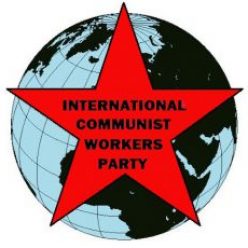
“Defeat Soviet Revisionism!” 1967 Chinese poster
We Learn from the Russian Revolution That Fighting Directly for Communism Is the Only Way to Triumph
Some comrades and friends want us to talk more about the strengths and weaknesses of the Russian Revolution.
Our pamphlet Mobilize the Masses for Communism talks about the weaknesses of the Bolshevik party. It explains that Soviet socialism could not “become” communism. Its main point, however, is what ICWP will do differently: what we have learned from the mistakes of the Soviets and others.
We recognize the Russian Revolution as one of the greatest working-class victories. The Russian communist party grew from 24,000 members in February 1917 to over 200,000 seven months later. Many were in the Russian army in the trenches of the first world war. These members, mostly new Bolsheviks, mobilized millions to overthrow the liberal capitalist Kerensky government and establish the Soviet republic.
The Bolsheviks declared communism as their goal. Fourteen imperialist powers sent troops to attack the Soviets, but the Bolsheviks organized more than five million workers and peasants into the Red Army to smash them. They also organized among the soldiers of the invading armies. Every invader witnessed big revolts among rank-and-file soldiers, forcing them to withdraw.
In 1918, the Bolsheviks organized society as “war communism.” As an emergency measure, they eliminated money, but they didn’t think that the masses (or the system of production) were ready for this long term.
After the war, Russia was in chaos. There were rebellions of workers, peasants, and soldiers. In 1921 the Bolsheviks retreated to the New Economic Policy (NEP), which meant openly capitalist relationships.
The first socialist Five-Year Plan replaced NEP in 1928. Bolshevik leaders advocated struggle toward more collective ways of life but undermined that by maintaining a wage system that pushed the masses to seek personal gain. Workers were urged to earn bonuses by producing more; students to get higher grades and white-collar jobs; soldiers to get medals and promotions; and women were rewarded for producing more babies.
This contradiction sharpened as factory and farm workers, including party members, fought for a more collective approach. While few workers or Party cadres questioned the wage system itself, many struggled against its divisively competitive policies.
Socialism was actually state capitalism. Although the means of production were no longer in the hands of private capitalists, the economic system still rested on money, banks, wages, and production for sale. Having rejected that people can be won directly to communism, Party leaders had no choice left but to accommodate capitalist relations.
Defeating the Nazis in World War II was a great achievement of millions mobilized most significantly by communists. Many – including about 20 million in the Soviet Union – died fighting for a world in which the working class, led by the Party, would become the human race.
Many counterrevolutionaries also died. This was war, and traitors had to be dealt with swiftly and summarily. Unlike many other countries, Russia had no fascist “Fifth Column” because they were dealt with before they could do further harm to the revolution.
But the Soviet leadership lacked confidence in the working class. They had decided in 1934 that defeating fascism would require allying with “lesser-evil” capitalists such as the USA and Great Britain. This meant organizing around nationalism and a vague classless “anti-fascism” rather than for communism.
The defeat of the Nazis in 1945 thus laid the basis, not for world communism, but for a new Soviet empire that renounced and suppressed world revolution. The failure of the Bolshevik revolution to achieve communism became obvious in 1989, but Russian communism was already defeated once its leaders determined to mobilize the masses for socialism, not communism.
We have learned from both their victories and their mistakes. We fight directly for communism and know the working class will be won to this. This is the only way the Party and our class can triumph.
We invite comrades and readers to send in your questions about the former Soviet Union and other aspects of communist history. Future articles will try to answer them.
See Pamphlet “Mobilize the Masses for Communism” here

